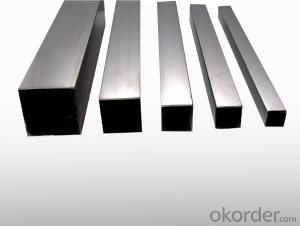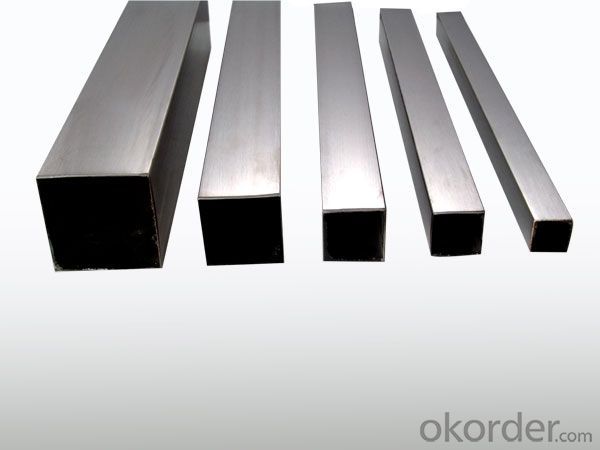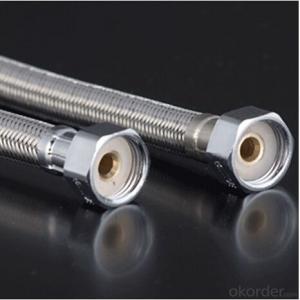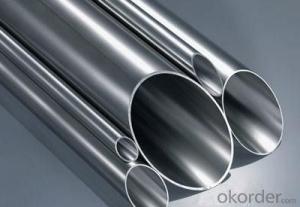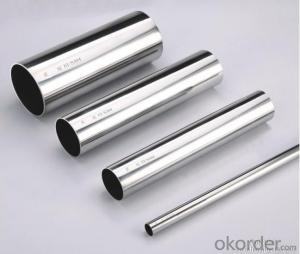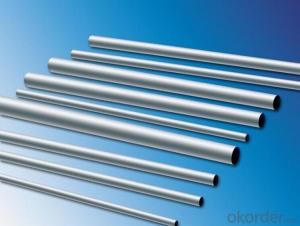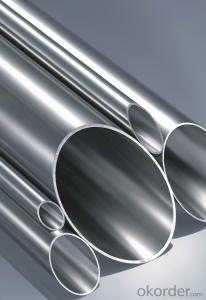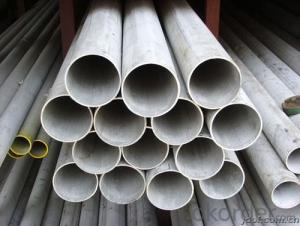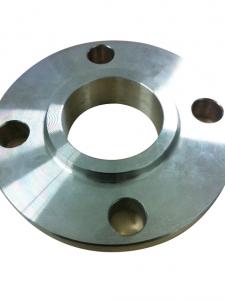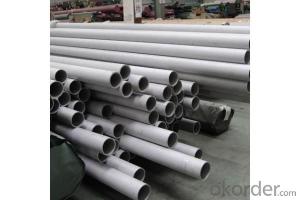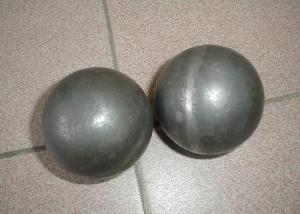stainless steel square tube
- Loading Port:
- China Main Port
- Payment Terms:
- TT OR LC
- Min Order Qty:
- -
- Supply Capability:
- -
OKorder Service Pledge
OKorder Financial Service
You Might Also Like
Quick Details
| Standard: | Place of Origin: | Model Number: | |||
| Type: | Steel Grade: | Application: | |||
| Certification: | Thickness: | Outer Diameter: | |||
| Item: | Cetification: | Welding Line type: | |||
| Quality: | Package: | Delivery: | |||
| Stock: |
Packaging & Delivery
| Packaging Detail: | In plastic wrapper/wooden case/according to your requirements |
| Delivery Detail: | In 15 days |
Specifications
stainless steel square tube/pipe
T :o.3-100mm
OD:6-1000mm
Finish: bright
Quality: Top quality tube stainless steel
stainless steel square tube/pipe
Thickness:1-100mm
Outer Diameter:10-1000mm
Welding line type: ERW
Item | High quality stainless steel tube price |
Standard | ASTM A240,GB/T3280-2007,JIS4304-2005,ASTM A167,EN10088-2-2005,etc |
Material | 310S,310,309,309S,316,316L,316Ti,317,317L,321,321H,347,347H,304,304L 302,301,201,202,403,405,409,409L,410,410S,420,430,631,904L,Duplex,etc |
Thickness | 1-100mm |
Outer Diameter | Customized |
Welding line type | welded or seamless |
Package | Standard export package, suit for all kinds of transportation, or as required. |
Price term | Ex-Work, FOB, CNF, CFR, CIF, FCA, DDP, DDU, etc |
Payment term | T/T,L/C,DP,Western union |
MOQ | 500Kg |
Application | Stainless steel tube applies to construction field, ships building industry, Stainless steel tube can be made according to the customers’ requirements. |
Contact | If you have any question, please feel free to contact us. We believe customers first! |
- Q: Can stainless steel pipes be insulated with polytetrafluoroethylene?
- Yes, stainless steel pipes can be insulated with polytetrafluoroethylene (PTFE). PTFE is a high-performance polymer known for its excellent thermal and chemical resistance. It can withstand a wide temperature range (-200°C to +260°C) and is highly resistant to corrosion and chemical attack. These properties make PTFE a suitable material for insulating stainless steel pipes in various industrial applications. When used as insulation for stainless steel pipes, PTFE can provide thermal insulation to prevent heat loss or gain. It helps maintain the desired temperature of the fluid flowing through the pipes, which is crucial in applications where temperature control is essential, such as in chemical processing plants or food processing facilities. PTFE insulation also acts as a barrier against condensation, preventing moisture build-up on the pipe's surface. Furthermore, PTFE's low friction coefficient makes it easier for liquids to flow through the pipes, reducing pressure drop and improving overall system efficiency. It also has excellent electrical insulation properties, which can be advantageous in applications where electrical conductivity needs to be avoided. Overall, PTFE is a reliable and effective insulation material for stainless steel pipes, providing thermal, chemical, and electrical insulation properties, as well as corrosion resistance.
- Q: What is the difference between inside diameter and outside diameter in stainless steel pipes?
- Inside diameter (ID) and outside diameter (OD) are two important measurements used to describe the dimensions of stainless steel pipes. Inside diameter refers to the measurement of the innermost part of the pipe, which is the hollow space where fluids or gases flow. It is typically measured in millimeters or inches. The ID is crucial for determining the flow capacity of the pipe and is commonly used in calculations related to fluid dynamics and pressure drop. On the other hand, outside diameter refers to the measurement of the outermost part of the pipe, including the thickness of the pipe walls. It is also measured in millimeters or inches. The OD is essential for determining the overall size and strength of the pipe. It is often used in calculations related to pipe fittings, support requirements, and compatibility with other components or systems. In stainless steel pipes, the difference between the inside diameter and outside diameter is the thickness of the pipe walls. This thickness is necessary to provide structural integrity and resist external forces, such as pressure and temperature. The ratio between the inside diameter and outside diameter, known as the wall thickness, plays a significant role in determining the pipe's strength and suitability for specific applications. In summary, the inside diameter refers to the measurement of the inner part of the stainless steel pipe, while the outside diameter refers to the measurement of the outer part, including the thickness of the pipe walls. Understanding these two measurements is crucial for selecting the right pipe size, calculating flow capacity, and ensuring the pipe's overall suitability for the intended application.
- Q: How do stainless steel pipes compare to titanium pipes?
- Stainless steel pipes are generally more cost-effective and readily available compared to titanium pipes. While both materials offer excellent corrosion resistance, titanium pipes have superior strength and durability. However, titanium pipes are significantly more expensive and may require specialized welding techniques. Ultimately, the choice between stainless steel and titanium pipes depends on the specific application and budget constraints.
- Q: Can stainless steel pipes be pickled?
- Yes, stainless steel pipes can be pickled. Pickling is a process that removes surface impurities and oxides from the stainless steel, resulting in a clean and corrosion-resistant surface. This process is commonly used to prepare stainless steel pipes for further treatments or applications.
- Q: How do stainless steel pipes perform in corrosive environments?
- Stainless steel pipes perform exceptionally well in corrosive environments due to their high resistance to corrosion. The presence of chromium in stainless steel forms a protective layer, known as chromium oxide, which acts as a barrier against corrosion. This makes stainless steel pipes highly durable and reliable, even in harsh and corrosive conditions.
- Q: What is the maximum operating pressure for stainless steel pipes?
- The maximum operating pressure of stainless steel pipes is determined by several factors, including the grade of stainless steel, pipe diameter, and fluid temperature. In general, stainless steel pipes have higher pressure handling capabilities compared to other materials due to their inherent strength and resistance to corrosion. For instance, stainless steel pipes made from grade 304 or 316, which are commonly used across various industries, can withstand maximum operating pressures ranging from 1000 to 3000 psi or even higher, depending on the specific application and pipe size. However, it is essential to refer to the manufacturer's specifications and guidelines to ascertain the exact maximum operating pressure for a particular stainless steel pipe. It is important to consider that the maximum operating pressure can also be influenced by factors such as pipe wall thickness, pipe fittings, and joint connections. Hence, proper design, installation, and maintenance are crucial to ensure the safe and efficient operation of stainless steel pipes at their maximum operating pressure. Seeking guidance from a professional engineer or a specialist in stainless steel piping systems can provide accurate and specific information for a given application.
- Q: Can stainless steel pipes be insulated with polyphenylene sulfide?
- Yes, stainless steel pipes can be insulated with polyphenylene sulfide (PPS). PPS is a high-performance thermoplastic that offers excellent thermal and chemical resistance properties. It can be used as an insulation material for various applications, including pipes and tubing. When applied as insulation on stainless steel pipes, PPS can help in reducing heat transfer and preventing condensation. Additionally, PPS is also resistant to many chemicals, making it suitable for use in corrosive environments.
- Q: What is the thermal conductivity of stainless steel pipes?
- The thermal conductivity of stainless steel pipes can vary depending on the specific grade and composition of the stainless steel. However, on average, stainless steel has a thermal conductivity ranging from 14 to 19 watts per meter Kelvin (W/mK). This means that stainless steel pipes are relatively good conductors of heat, allowing for efficient transfer of thermal energy. This property makes stainless steel pipes suitable for various applications that require heat transfer, such as in heating systems, industrial processes, and even in some plumbing installations.
- Q: What is the lifespan of stainless steel pipes?
- The lifespan of stainless steel pipes can vary depending on various factors such as the grade of stainless steel used, the environment in which they are installed, and the maintenance practices followed. However, in general, stainless steel pipes have a long lifespan and can last for several decades or even longer with proper care and maintenance.
- Q: Are stainless steel pipes resistant to abrasion?
- Yes, stainless steel pipes are highly resistant to abrasion. The inherent properties of stainless steel, such as its hardness, toughness, and corrosion resistance, make it highly durable and less prone to wear and tear caused by abrasion compared to other materials.
Send your message to us
stainless steel square tube
- Loading Port:
- China Main Port
- Payment Terms:
- TT OR LC
- Min Order Qty:
- -
- Supply Capability:
- -
OKorder Service Pledge
OKorder Financial Service
Similar products
Hot products
Hot Searches
Related keywords
